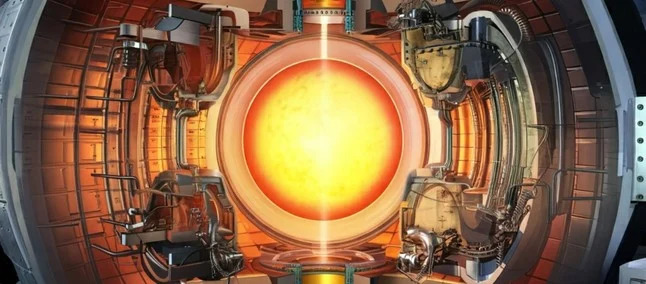SMART Reactor in Spain: First Plasma with “Negative Triangularity”
A significant milestone in nuclear fusion research has been achieved at the University of Seville. The SMART (Small Aspect Ratio Tokamak) reactor has produced its first plasma, marking the start of the operational phase of this innovative device. This achievement not only represents a major milestone for the SMART project but also pushes the boundaries of science toward a clean and sustainable energy source.
What is Nuclear Fusion?
Nuclear fusion is the process that powers stars, where hydrogen nuclei fuse at extremely high temperatures to form helium, releasing vast amounts of energy. Unlike nuclear fission, fusion produces fewer radioactive wastes and offers significantly lower safety risks.
To replicate nuclear fusion on Earth, scientists use devices known as tokamaks, donut-shaped machines designed to confine plasma, a state of matter composed of ions and electrons. The main challenge is keeping the plasma stable and confined long enough to generate energy.
The Innovative Role of SMART
The SMART reactor stands out from other tokamaks due to its use of negative triangularity, a unique configuration for the plasma. Typically, the plasma cross-section in tokamaks takes the shape of a "D" with the straight side facing the reactor’s center (“positive triangularity”). SMART, however, inverts this configuration, with the curved side of the "D" facing the center.
Advantages of Negative Triangularity:
Improved Plasma Stability: Reduces instabilities that cause energy losses.
Lower Wear on Tokamak Walls: Minimizes damage to internal structures, increasing reactor longevity.
Enhanced Energy Efficiency: Enables more stable and sustainable fusion processes.
With relatively compact dimensions of 1.6 x 1.6 meters, SMART uses 12 toroidal coils and 8 poloidal coils to shape and control the plasma.
The First Plasma: A Global Success
After years of research and design, the SMART reactor has achieved its first plasma, demonstrating the feasibility of its design. This milestone was made possible through collaboration with the Princeton Plasma Physics Laboratory (PPPL) and has attracted the attention of the international scientific community.
“We are thrilled to have seen the first magnetically confined plasma and look forward to leveraging SMART’s capabilities with the international scientific community,” said Eleonora Viezzer, physicist and professor at the University of Seville.
Why Nuclear Fusion is the Energy of the Future
Reactors like SMART represent a tangible hope for addressing the growing global energy demand without harming the environment. Unlike traditional energy sources, nuclear fusion is free of CO2 emissions and uses abundant fuels, such as deuterium and tritium, which can be extracted from water and lithium.
The innovations introduced by SMART could also inspire improvements in large-scale projects like ITER, the largest tokamak under construction in southern France.
Conclusion
The success of the SMART reactor and its negative triangularity demonstrates that nuclear fusion is no longer a distant dream. With continued support from the scientific community and strategic investments, this technology could revolutionize the global energy landscape, offering a safe, sustainable, and inexhaustible solution for the planet’s future.








Leave a Comment